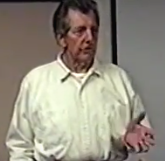|
The minimalist approach
with a huge result
Innovative Surge Procedures for Enhanced Oil Recovery
|
Reported by ENI,
Reported in |
What we offer
WeST LLC offers innovative surge technology to stimulate well flow in consolidated formations. The operation uses a through-tubing, retrievable, pressure-actuated valve to build up a pressure differential and then surge the perforations—no introduction of harmful chemicals. This is the basis for low-cost, highly effective stimulation of existing wells. Evidence to date demonstrates efficacy. See more…
Scientific background: why does this work?
Radial flow tests reveal that many wells produce at only a fraction of their potential and lab tests simulating actual down-hole conditions reveal why: shaped charge residue and a compacted layer in perforation tunnels impede flow. Experience so far has confirmed that surging can significantly enhance flow (or injectivity) in perforation tunnels. Documentation confirms these observations. See more…
Surging—by any method—can greatly increase well production in consolidated formations. With our procedure, you get ease of deployment, simplicity of operation, retrievability and re-usability—all factors in optimizing cost-effectiveness. The production impact from surging existing wells is evident in comparisons of pre-surge and post-surge flow rates. See more…
Who we are
Emmet F. Brieger, a veteran oil well services engineer, and Leesa Brieger, a computational scientist, have teamed up to bring this technology to market. While at Schlumberger Well Services in Houston, E.F. Brieger headed a design group that observed evidence of perforation tunnel clogging—across the board, for all shaped charges. After leaving Houston, he collaborated with Roy Vann of Geo Vann (now Vannsystems, a division of Halliburton), which provides tubing-conveyed perforating, a practice for surging at completion that has become a worldwide standard. The rest is history. See more…
Presentation
See the presentation by E.F. Brieger to the Department of Energy as part of his application for funding through DOE’s Inventions and Innovations program, as it was then known. He was funded, DOE grant DE-FG36-99GO10446, 1999, and the grant allowed for patenting and development of the Well-Bottom Implosion system, patent US 6,296,058 B1, 2001. 